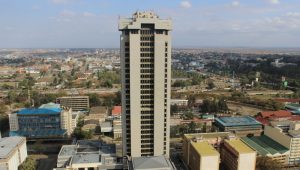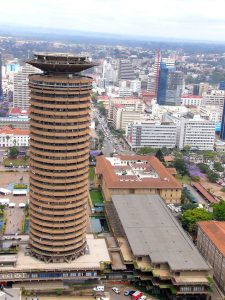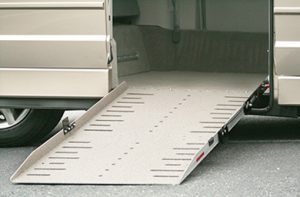By Ogova Ondego
Published January 17, 2017
 Most of us in Africa dream of living in a town. Here, we assume, life is like a leisurely walk in a park in paradise on a Sunday evening.
Most of us in Africa dream of living in a town. Here, we assume, life is like a leisurely walk in a park in paradise on a Sunday evening.
However, did you know that most urban space isn’t as friendly as we take it to be? That most African towns can accommodate only healthy and able-bodied people?
It takes you to be incapacitated in some way for you to awaken to the cruel reality that most urban centres across not just Kenya but Africa are user-unfriendly.
The case of a friend who is unable to get to her fourth floor apartment in the Kenyan capital, Nairobi, as the only way to get there is by a narrow winding staircase can be used as an example of how disability-unfriendly urban Africa is; the woman is nursing a broken ankle.
RELATED:Why Safety and Security Should be Stressed in Urban Planning

On the day she got injured, she says neighbors passed her on the ground floor without ever enquiring about her welfare, let alone offering her any assistance. It was only after her husband returning home from work at 9:00 PM that he got her into the house. She had been at the entrance since 4:00 PM without any one taking pity on her and assisting her up the stairs to her apartment. She say she had never realised the importance of considering the disabled in the construction of urban infrastructure until now.
And it isn’t just buildings like the one in which my friend lives that is unfriendly to the ill, the elderly and the weak. Even basic facilities like toilets, public service vehicles, roads and parks cannot accommodate people with any disability as they were planned and contracted for the energetic, able bodied youthful people.
RELATED:Kenya, Uganda, Rwanda and Zambia to Address Power Sector and Shape Regional Infrastructure Planning
Is it investors, governments or urban planners who are failing in developing towns with like transportation, architecture and environment that can accommodate everyone regardless of the status of their bodies? Or should people with disability stay away from urban Africa as its infrastructure and environment are not disability-friendly?
Why are ramps and protective guard rails that could facilitate mobility for wheel-chair and crutch-users non-existent in African towns and cities?
People with disability feel most disadvantaged when travelling around cities as public service vehicles like—non-formal matatus and formal buses—hardly ever wait for them to safely board or alight. Some have even been disabled even more when these vehicles take off while they are still trying to get on or off them.
RELATED:Non-Enforcement of By-Laws Marres Urban Environment
 I recall an incident in which commuters going to kikuyu on the outskirts of Nairobi trampled upon a woman in a wheel chair as they scrambled for space in the vehicle one evening. Instead of helping the woman onto the bus, they shoved her aside and not even her desperate cries for help went unheard.
I recall an incident in which commuters going to kikuyu on the outskirts of Nairobi trampled upon a woman in a wheel chair as they scrambled for space in the vehicle one evening. Instead of helping the woman onto the bus, they shoved her aside and not even her desperate cries for help went unheard.
As already noted, most buildings are fitted with staircases; some have lifts but never rumps. In business premises where ramp exist, they are usually for facilitating the movement of goods rather than helping people with some disability. One does not need to be permanently disabled to notice how user-unfriendly most urban buildings are.
It would be prudent for urban planners to plan with disability in mind as no one knows when one may be disabled.
RELATED:What’s The World’s Favourite Colour?
Writing in Habitat Debate, publication of the United Nations centre for Human Settlement (UNCHS-Habitat), Chomba Munyi of an organisation known as Disability Management and Development calls upon the government and organisations championing the rights of people with disability to lobby for the enactment of building by-laws requiring all public buildings to be amended to meet specified minimum standards to accommodate persons with disabilities.
 Sharing from experience, visually handicapped Munyi argues that amending the law to accommodate people with disability will enable them to fully participate in national development.
Sharing from experience, visually handicapped Munyi argues that amending the law to accommodate people with disability will enable them to fully participate in national development.
RELATED:How to Harness Africa’s Aviation Potential
Munyi further says that a barrier-free environment, one which facilitates the mobility of people with handicaps, is all one needs to feel appreciated and therefore to function at one’s optimum capacity.




